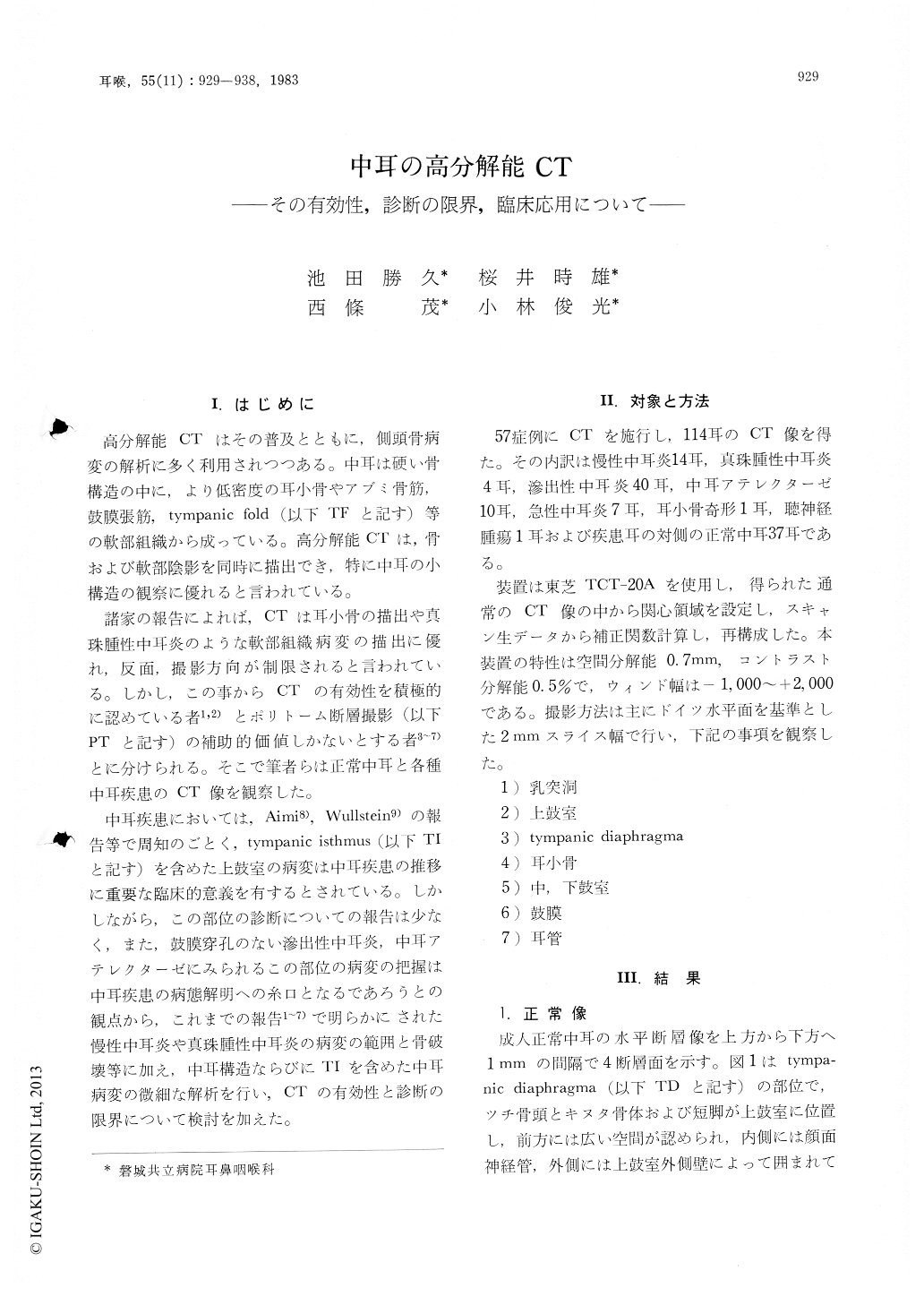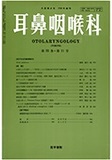Japanese
English
- 有料閲覧
- Abstract 文献概要
- 1ページ目 Look Inside
I.はじめに
高分解能CTはその普及とともに,側頭骨病変の解析に多く利用されつつある。中耳は硬い骨構造の中に,より低密度の耳小骨やアブミ骨筋,鼓膜張筋,tympanic fold(以下TFと記す)等の軟部組織から成っている。高分解能CTは,骨および軟部陰影を同時に描出でき,特に中耳の小構造の観察に優れると言われている。
諸家の報告によれば,CTは耳小骨の描出や真珠腫性中耳炎のような軟部組織病変の描出に優れ,反面,撮影方向が制限されると言われている。しかし,この事からCTの有効性を積極的に認めている者1,2)とポリトーム断層撮影(以下PTと記す)の補助的価値しかないとする者3〜7)とに分けられる。そこで筆者らは正常中耳と各種中耳疾患のCT像を観察した。
High resolution computed tomography was performed in 57 cases with various middle ear diseases (chronic otitis media, otitis media with effusion, acute otitis media and atelectasis). Although further improvement in detectability is necessary in order to discriminate each type of the soft tissue lesions, CT is the most useful method currently available in detecting the small structures and soft tissue lesions of the middle ear. In particular, the lesions at the tympanic isthmus and tympanic fold could very clearly be detected only by CT.
In acute otitis media, lesions usually started in the attic and spread to the mastoid air cells. In otitis media with effusion, the soft tissue shadow was ovserved in the attic and mastoid air cell.
CT is valuable in diagnosis, evaluation of thetreatment and prognosis, and analysis of pathophysiology in the middle ear diseases.

Copyright © 1983, Igaku-Shoin Ltd. All rights reserved.


